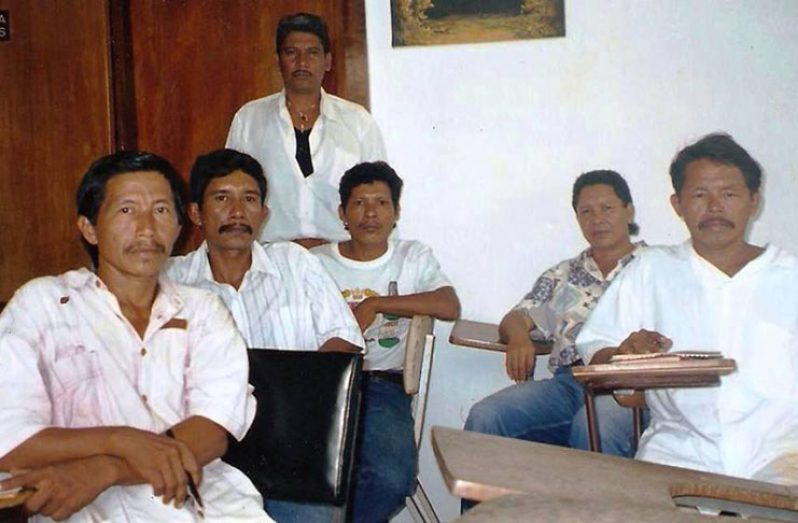– still leading the way for Indigenous art almost four decades later
By Ravena Gildharie
WITH each piece of wood that they transformed into an artistic marvel, the Lokono artists of Pakuri Village (formally St Cuthbert’s Mission) cemented their names, talents, creativity and culture into Guyana’s history of indigenous art and native forms.
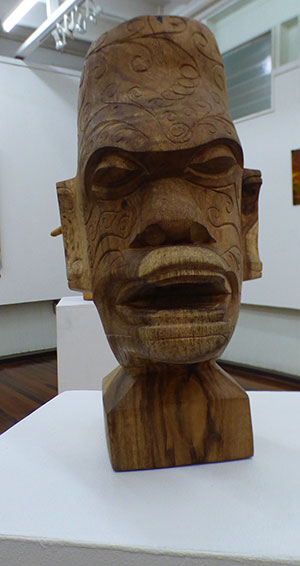
Unlike any other indigenous village in Guyana, this Arawak-based community situated on the left bank of the Mahaica Creek, has produced well over a handful talented artists and sculptors recognised throughout the Caribbean and beyond for their remarkable craftsmanship and indigenous-inspired creativity.
From indigenous totem poles that tower 20 feet and above, to minuscule emblems of native subjects and symbols, to intricate but master-crafted depictions of flora and fauna, held dear to the Indigenous people, the Lokono sculptors` no doubt’ represent their people well.
Speak the names: George and Foster Simon, Oswald ‘Ozzie’ Hussein, Roland and the late Telford Taylor and Lynus Klenkian, also deceased, and people are quick to attach the label ‘the Lokono Artists of St. Cuthbert’s’ to this group. Back in the 1980s, they banded together to promote, exhibit and market their art, seeking sponsorship through various funding initiatives under leadership and direction of George, the leading artist of his generation, and who led the development of what is today branded ‘Lokono art.’
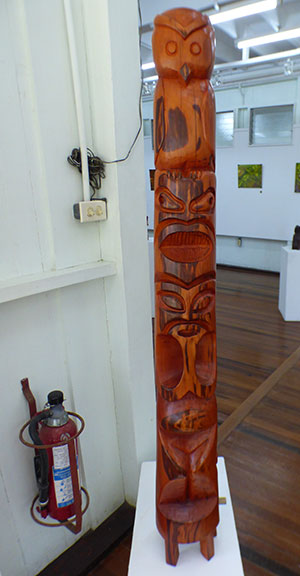
“They have created a school for Indigenous art in Guyana,” says Curator (ag) of Castellani House, Ohene Koama, during an exclusive interview with the Pepperpot Magazine.
He highlighted the intuitiveness of the Lokono artists in learning and adapting common styles and forms, even of European and North American origins, to reference their own concepts and indigenous identity. “It is unique and it sets the foundation for young and upcoming artists from indigenous communities and that will be there for generations to come,” Koama stated.
The works of Hussein, Simon and Taylor are mounted in the National Collection at Castellani House and some of them have exhibited in the Caribbean, North America and Europe.
ORIGINS
Koama highlighted how the artists recognised and embraced each other’s work, and encouraged indigenous identity and inspiration from Amerindians’ way of life, their environment, and native experiences, all installed in fine art form. He observed the intricate depictions, including the Harpy Eagle noted in
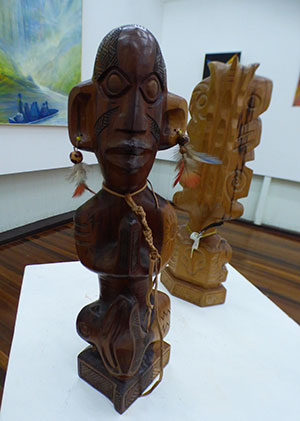
many of Ozzie’s work especially his totem poles, which have various sculpted symbols on both sides, visible from almost all angles. The form of Indigenous identity is evident in his pieces right down to the stand on which it is mounted.
The curator (ag) emphasised the role of George Simon, who led the `Lokono’ venture and helped developed indigenous art in Guyana.
George, born in Pakuri, was adopted by an English Anglican Priest. He is Foster’s brother.
During the early 1970s, he initially studied A-level Art at Thurrock and Basildon College in Grays, Essex, England and later pursued a Bachelor of Arts Degree in Fine Art at the University of Portsmouth. His earliest work as a painter focused on his heritage in depictions of the Amerindians’ way of life. He later returned to Guyana and worked alongside renowned archeologist and anthropologist, Dennis Williams.
George guided the `Lokono’ group on national exhibitions, established a craft shop in the village and other forms of exposure.
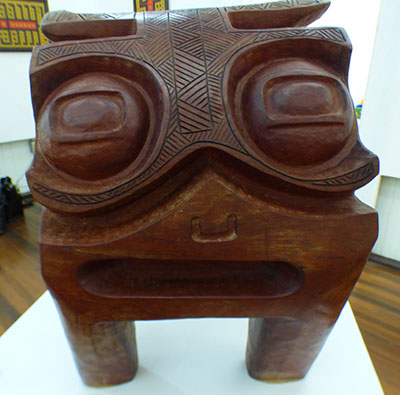
Hussein said he benefitted tremendously from the group, having produced over 1,000 pieces over the three decades. He explained that the artists met frequently during early years of formation, discussed their work, took walks through the village and forests, drawing insights and concepts from each other and things around them.
“Like brothers, we embraced each other’s work and it gave us a chance to relax while we improved and promoted our work, especially the spiritual aspect of the art. It helped our inspiration, pushed our creativity to be more observant and to connect with nature and everything in it,” Hussein told the Pepperpot Magazine.
They have since each expanded their work individually but remain rooted in a unique art form of indigenous identity and culture. Many carvings depict birds, animals and objects
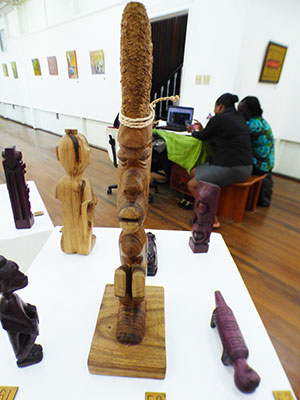
that holds spiritual meaning to the Indigenous people.
Hussein, who now resides in Diamond, East Bank Demerara, is a self-taught artist, who started carving when he was about 10 years, using tools he received in school. He started crafting miniature arrows, bows, canoes and helicopters out of of wood. As he got older, his skills sharpened and he developed a greater appreciation for art which he began acknowledging as a mold of his Indigenous heritage.
“It made me feel good about myself,” he said, reflecting of his years of experience as a skilled sculptor. Pleased that much of his work are in private collections across and beyond Guyana, Hussein said, he would love to see back some of those.”
He is currently showcasing at the National Indigenous Art Exhibition at Castellani House which opened earlier this month, and where he has on display over 35 pieces.
Roland Taylor, another self-taught artist is also show-casing at the ongoing exhibition.
Recalling his early life in Pakuri, Taylor, one of four brothers, hails from a line of artists, since the Simons and Husseins were all related. His older brother was the late Telford, who died three years ago. He was known for sculpting one
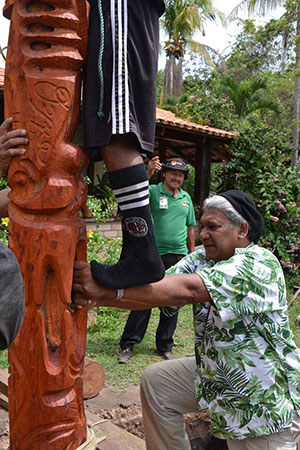
of the first and largest Indigenous totem pole ever mounted publicly in Guyana, previously at the Walter Roth Museum of Anthropology on Main Street.
By the time Telford was well-developed in sculpting, the younger Taylor, was now getting to like the art.
“As a teenager, I sold my first piece that I sculpted to Creations in Water Street. I got $300 for that piece and I bought a sharpening stone which I still have to this day,” Taylor related.
One of Roland’s masterpieces on display currently, is a five-foot-long totem pole depicting over 10 different symbols of animals and life from the forests, presided over by the medicine man.
He currently lives in Annai, Rupununi, where he teaches art at the Bina Hill Institute. He still sculpts every day, producing wooden eagles, owls, croaking frogs and walking sticks among others. His works are showcased at the craft shop in Annai and Surama, as well as in Lethem.
Lynus was also a skilled sculptor who hails from a family of sculptors.



.jpg)





